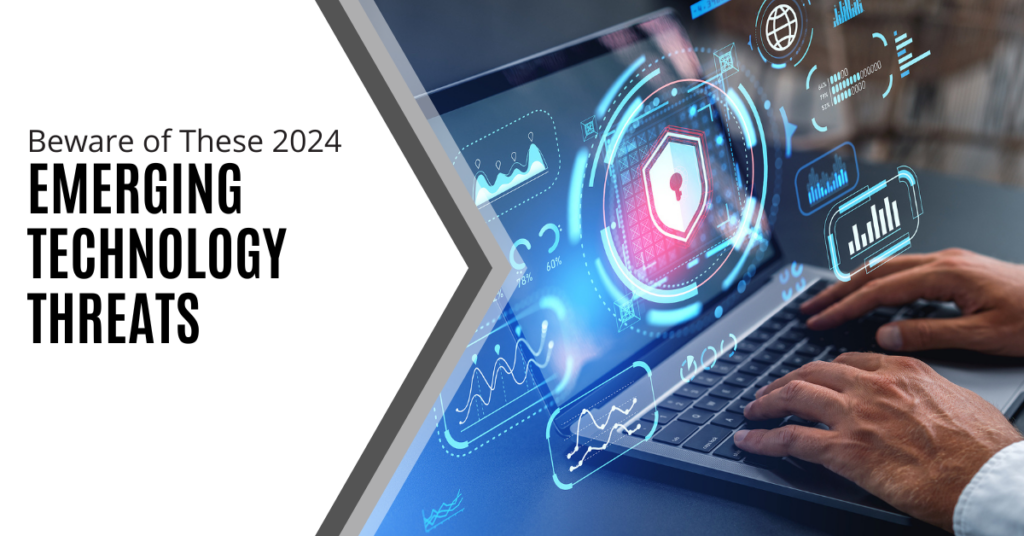
Data Poisoning Attacks
Data poisoning refers to the deliberate corruption of datasets used in training AI models. By introducing malicious data, attackers can manipulate algorithms to produce inaccurate or harmful outcomes. This could have severe consequences in industries like healthcare or finance. To counter this threat, safeguarding the integrity of training data and employing rigorous validation through use of cybersecurity strategy.
Companies should be cautious when using AI-generated data. It’s crucial to complement this data with human oversight, cybersecurity, and information from diverse, reliable sources.
Vulnerabilities in 5G Networks
The rapid expansion of 5G technology has opened up new avenues for cyberattacks. With more devices connecting to the network, the potential attack surface widens. Internet of Things (IoT) devices, which rely heavily on 5G, could become prime targets for hackers. Protecting these devices and enforcing strict network security protocols is critical to avoid large-scale breaches.
To mitigate these risks, businesses should adopt a comprehensive mobile device management strategy. As mobile devices take on more workloads, organizations must closely monitor and regulate how these devices access sensitive business information.
Quantum Computing Risks
Quantum computing, which promises unprecedented computational power, also introduces new security risks. With its ability to break even the strongest encryption methods, quantum computing could allow attackers to access highly sensitive data. This emerging threat highlights the need for developing quantum-resistant encryption techniques to ensure digital security.
Manipulation of Artificial Intelligence (AI)
While AI is revolutionizing many industries, it also presents new opportunities for cybercriminals. AI algorithms can be manipulated to spread false information, with cyber attackers already creating deepfakes and automating phishing schemes. As AI-driven threats become more complex, it is essential to implement advanced detection systems to differentiate between legitimate and malicious AI content.
Exploits in Augmented Reality (AR) and Virtual Reality (VR)
AR and VR technologies offer immersive user experiences, but they also come with their own set of cybersecurity challenges. Criminals could exploit these platforms to deceive users, resulting in real-world consequences. Ensuring the security of AR and VR applications is crucial, particularly in industries like gaming, education, and healthcare, to prevent manipulation and privacy breaches.
Evolution of Ransomware Attacks
Ransomware attacks have become more sophisticated, moving beyond simple data encryption. Cybercriminals now employ double extortion techniques, stealing sensitive data before locking files. If victims refuse to pay, attackers may release or sell the data, causing significant reputational damage.
To defend against these evolving ransomware threats, businesses should implement robust backup solutions, conduct regular cybersecurity training, and engage in proactive threat hunting.
Ongoing Supply Chain Attacks
Supply chain attacks continue to be a significant concern. Hackers often target third-party vendors or software providers to compromise larger organizations. Strengthening supply chain security is vital in preventing widespread cyber incidents. This can be achieved through comprehensive vendor assessments, multi-factor authentication, and continuous monitoring of third-party relationships.
Biometric Data Security Concerns
As biometric authentication methods like fingerprint and facial recognition gain popularity, their security becomes crucial. Unlike passwords, once compromised, biometric data cannot be changed. To prevent identity theft and fraud, it is essential to encrypt biometric data and ensure service providers adhere to strict privacy and security regulations.
Advanced Phishing Threats
Phishing, one of the oldest forms of cyberattacks, has become increasingly advanced with the help of AI. Attackers now personalize spear phishing attempts based on detailed personal or professional information. Additionally, vishing attacks, which use voice calls or voice assistants to impersonate legitimate entities, are becoming more common.
To combat phishing, regular employee training and the use of automated detection tools are crucial.
Strategies for Protecting Against Emerging Threats
As technology evolves, so do the risks we face. Staying proactive and vigilant is key to staying secure. Here are some steps to help protect against modern cyber threats:
- Stay informed about emerging cybersecurity threats and trends.
- Use strong, unique passwords and multi-factor authentication for all online accounts.
- Regularly update software and devices to patch known vulnerabilities.
- Avoid clicking on suspicious links or downloading unknown attachments.
- Verify the legitimacy of any requests for information, especially from unsolicited contacts.
- Regularly back up important data to minimize the impact of a cyberattack.
- Consider investing in cybersecurity insurance tailored to your specific needs.
- Report any suspicious activity to the appropriate authorities immediately.
Is Your Cybersecurity Prepared for 2025?
Cyber threats evolve quickly, and last year’s solutions may not be enough to keep your business safe. Don’t leave your security vulnerable. We offer comprehensive cybersecurity assessments to help identify gaps in your defenses.
Contact us today to schedule a consultation and ensure your cybersecurity strategy is up to date.
Twintel has grown into an expansive, full team of IT services professionals, acting as the outsourced IT department of non-profits, small to mid-size businesses, and enterprise-level corporations in Orange County, across California, and nationally.
Today, it’s the strength and deep expertise of the Twintel team that drives positive outcomes for clients. Each of the support staff, technicians, and engineers works diligently each day to make sure that the companies served have the seamless, secure, and stable IT environments needed to allow them to pursue their organizational objectives.